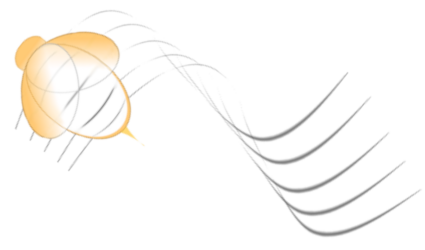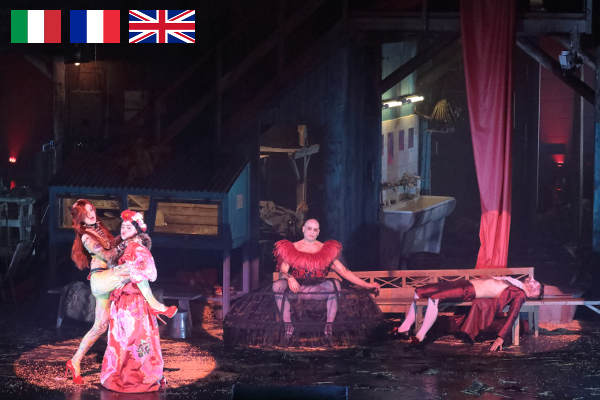Danza macabra nella Casa di morti
Si sviluppa su tre piani narrativi abilmente giostrati l'ipnotica produzione del capolavoro di Janàček alla Bayerische Staatsoper.
MONACO di BAVIERA, 19 ottobre 2018 - Questa produzione ipnotica alla Staatsoper di Monaco sfida ogni tentazione descrittiva e invita alla riflessione. L'opera non racconta una storia drammaticamente ben definita: degli internati in un campo in Siberia raccontano le loro storie; sopraggiunge un nobile e viene percosso per aver preteso di essere un prigioniero politico; i carcerati inscenano pièce teatrali piena di allusioni erotiche; un'aquila scatena una discussione sul tema della libertà. Infine, il nobile viene liberato, uno dei detenuti riconosce in un altro appena morto colui che gli ha rovinato la vita. È soprattutto la musica meravigliosa di Janàček a dominare.
Simone Young dirige la Bayrische Staatsorchester con perspicacia ed energia, attenta al minimo dettaglio, e il ricco tessuto musicale, dagli accenti neri e rosso sangue, diviene luminoso e vibrante.
L'allestimento di Frank Castorp è assai esigente e si sviluppa su tre piani narrativi: l'azione nel tempo reale di un prigioniero che racconta la sua storia, il contenuto di questa storia e spesso un video sul fondo con diverse vicende fra i detenuti. Così, le identità sono confuse, incerte, come può avvenire in un carcere. Il giovane internato Aljeja, cantato dal soprano Evgeniya Sotnkiova, porta un costume da danzatrice degli anni 1920 dai tratti d'uccello, veste e copricapo piumati: l'aquila, un uomo, una donna... La scena girevole di Aleksandar Denić, che mostra di volta in volta diversi luoghi del campo, offre un altro aspetto danzante, indefinito alla produzione, così come le luci di Rainer Casper. Nel secondo atto appare una Danza Macabra e propone la chiave di lettura: la vita in prigione, la vita all'esterno, le identità, nulla è certo, nulla è reale.
Una meravigliosa compagnia di canto dà vita a questi personaggi: elegante malgrado il contesto Charles Workman come Skuratov; notevoli anche Bo Skovhus come Šiškov e Peter Rose nella parte di Aleksandr Petrovič Gorjancikov.
Applausi ampiamente meritati anche per Aleš Briscein, Manuel Günther, Tim Kuypers, Christian Rieger, Ulrich Reß, Milan Siljanov, Galeano Salas, Oğulcan Yılmaz, Alexander Milev, Alexander Milev, Niamh O’Sullivan, Callum Thorpe, Matthew Grills, Kevin Conners, Dean Power et Long Long.
Una serata densa e riuscita, complimenti!
foto © Wilfried Hösl
Une Danse Macabre dans la Maison des Morts
par Suzanne Daumann
La production hypnotique au Staatsoper de Munich du chef d'ouvre de Janàček joue sur trois niveaux de narration, mais rien n’est certain, rien n’est réel.
Munich, le 19 octobre 2018 - Cette production hypnotique au Staatsoper de Munich défie toute description et invite à la réflexion. L’opéra ne raconte pas une histoire bien dramatiquement concise: des prisonniers dans un camp en Sibérie racontent leurs histoires; survient un noble et est battu pour avoir prétendu être un prisonnier politique; des prisonniers jouent des pièces de théâtre pleines d’allusions sexuelles; un aigle déclenche une discussion sur le thème de la liberté. Finalement, le noble est libéré, un des prisonniers reconnaît dans un autre qui vient de mourir celui qui lui a ruiné la vie. C’est avant tout la musique merveilleuse de Janàček qui domine cette histoire.
Simone Young dirige le Bayrische Staatsorchester avec beaucoup de perspicacité et d’énergie, attentive au moindre détail, et la riche étoffe de la musique aux accents de rouge sang et de noir devient lumineuse et vibrante.
La mise en scène de Frank Castorp est assez exigeante, elle joue sur trois niveaux de narration: l’action en temps réel d’un prisonnier qui raconte son histoire, le contenu de cette histoire et bien souvent une vidéo en arrière-plan de divers actions parmi les prisonniers. Ainsi, les identités sont brouillées et incertaines, comme elle peuvent l’ȇtre en prison. Le jeune prisonnier Aljeja, chanté par la soprano Evgeniya Sotnkiova, portait le costume d’une danseuse des années 1920 aux aspects d’oiseau, une traine et une coiffe de plumes: l’aigle, un homme, une femme… La scène tournante d’Aleksandar Denić qui montrait tour à tour différents lieux du camp donnait un autre aspect dansant, brouillant à la production, ainsi que les lumières de Rainer Casper. Au second acte apparait une Danse Macabre et apporte la clé de cette interprétation: la vie de prison, la vie dehors, les identités - rien n’est certain, rien n’est réel.
Une distribution de chanteurs merveilleux interprétait ces personnages: élégant malgré le contexte - Charles Workman comme Skuratov. Remarquables aussi Bo Skovhus comme Šiškov et Peter Rose dans le rôle de Aleksandr Petrovič Gorjancikov.
Les applaudissements étaient bien mérités par Aleš Briscein, Manuel Günther, Tim Kuypers, Christian Rieger, Ulrich Reß, Milan Siljanov, Galeano Salas, Oğulcan Yılmaz, Alexander Milev, Alexander Milev, Niamh O’Sullivan, Callum Thorpe, Matthew Grills, Kevin Conners, Dean Power et Long Long.
Une soirée riche et réussie - merci et bravo!
photos © Wilfried Hösl
A Danse Macabre in the House of the Dead
by Suzanne Daumann
An hypnotic production of Janàček’s masterpiece at the Staatsoper in Munich is played with three narration levels, but nothing is certain, nothing is real.
Munich, October 19th, 2018 - This year’s hypnotic production at the Staatsoper in Munich defies description and invites thought and association. The opera doesn’t have much of a storyline. Prisoners in a Siberian camp come together and tell their stories; a nobleman arrives and gets a beating for claiming to be a political prisoner; prisoners enact two comic pieces full of sexual innuendoes, an eagle sparks discussions about freedom - in the end, the nobleman is set free and one of the prisoners recognizes in another one - who just died - the man who ruined his life. It’s most of all Janàček’s wonderful music that gives life and breath to this story.
Simone Young conducted the Bayrische Staatsorchester with great insight and energy, attentive to every detail, and the rich fabric of the music came to shine with many a blood red and dark accent. Frank Castorp’s staging was very demanding, it played with three narration levels: the actual action of a prisoner telling his story, the content of this story and live video transmissions of different actions. Identities were uncertain and blurred, as they tend to be in prison situations. The young prisoner Aljeja, sung by soprano Evgeniya Sotnikova, wore the costume of 1920s singer dressed as a bird, with a feather-like trail and head-dress: the eagle, a man, a woman… The turnaround stage designed by Aleksandar Denić, showing in turns the different parts of the camp, lent another dancing, blurring aspect to the production and likewise Rainer Casper’s lighting. An actual Danse Macabre appeared in the second act and brought the key to this interpretation: prison life, outside life, identities - nothing is certain, nothing is real.
A cast of great singers gave life to the characters: elegant in spite of the context - Charles Workman as Skuratov. Equally remarkable were Bo Skovhus as Šiškov and Peter Rose in the role of Aleksandr Petrovič Gorjancikov. Applause was due to and received also by the rest of the cast: Aleš Briscein, Manuel Günther, Tim Kuypers, Christian Rieger, Ulrich Reß, Milan Siljanov, Galeano Salas, Oğulcan Yılmaz, Alexander Milev, Alexander Milev, Niamh O’Sullivan, Callum Thorpe, Matthew Grills, Kevin Conners, Dean Power and Long Long.
A rich and insightful evening - thanks and bravo!
photos © Wilfried Hösl





















